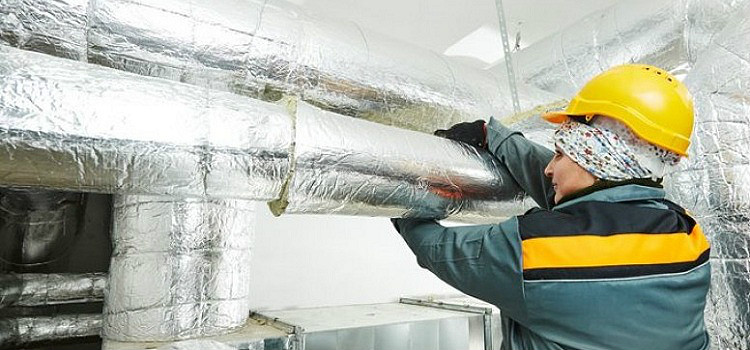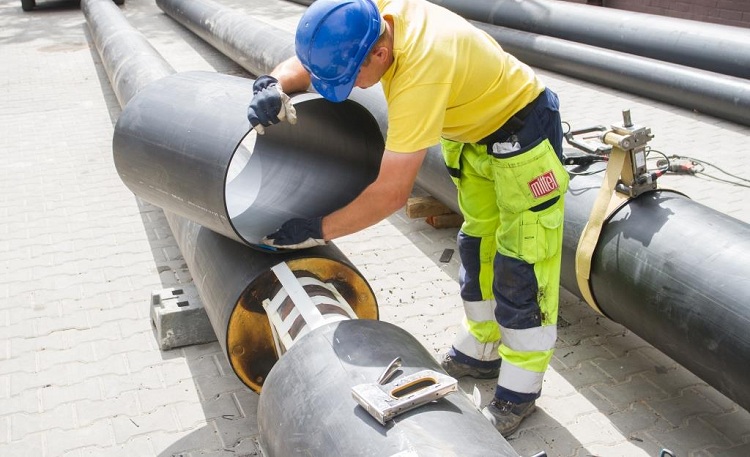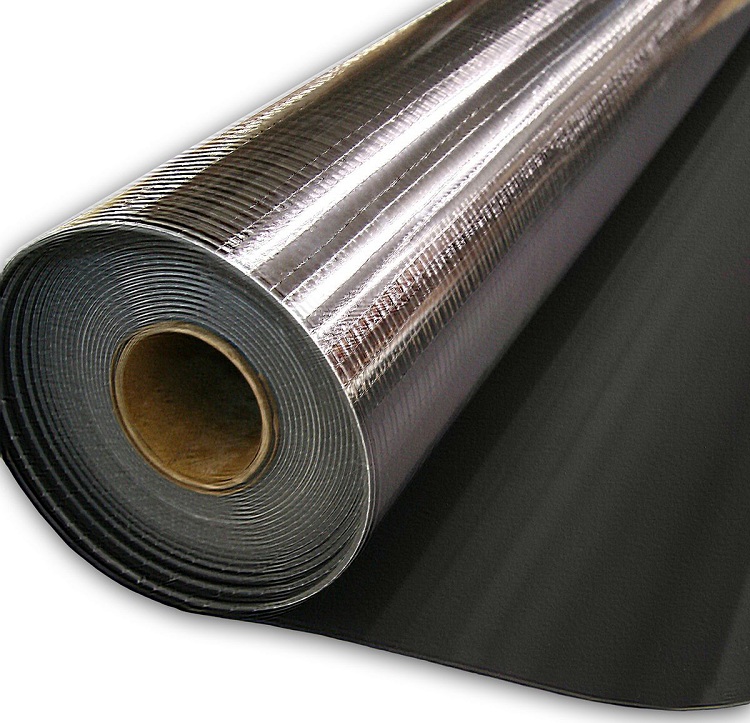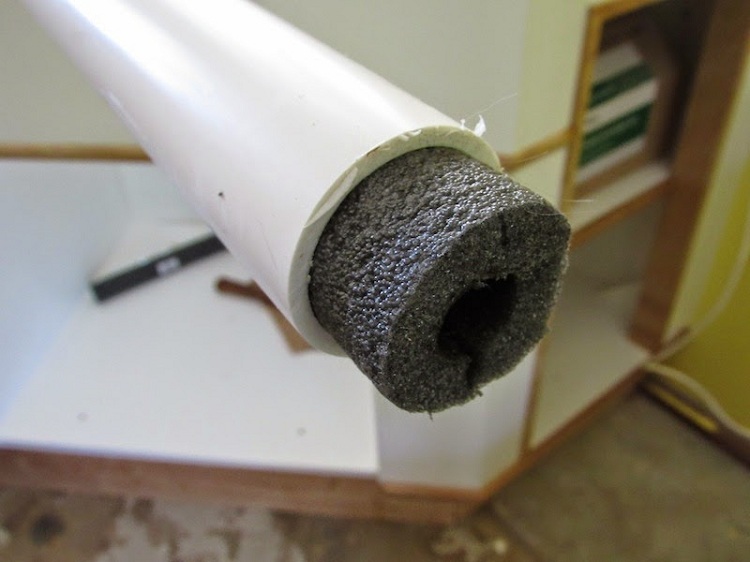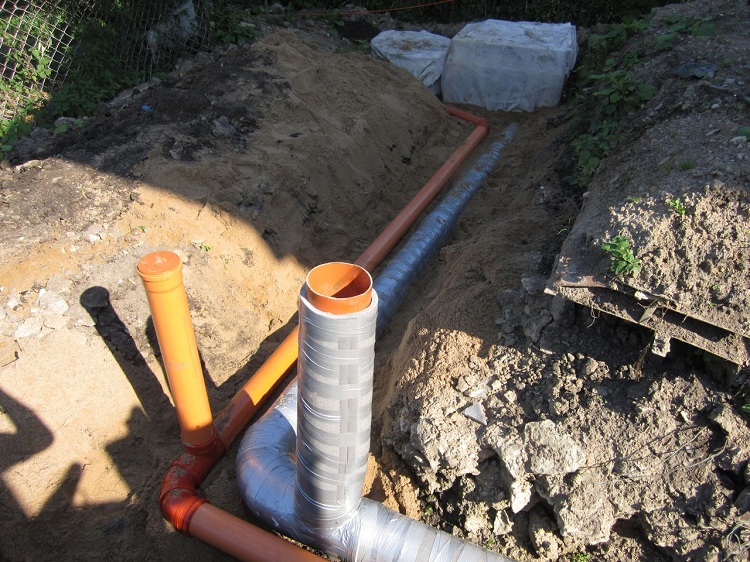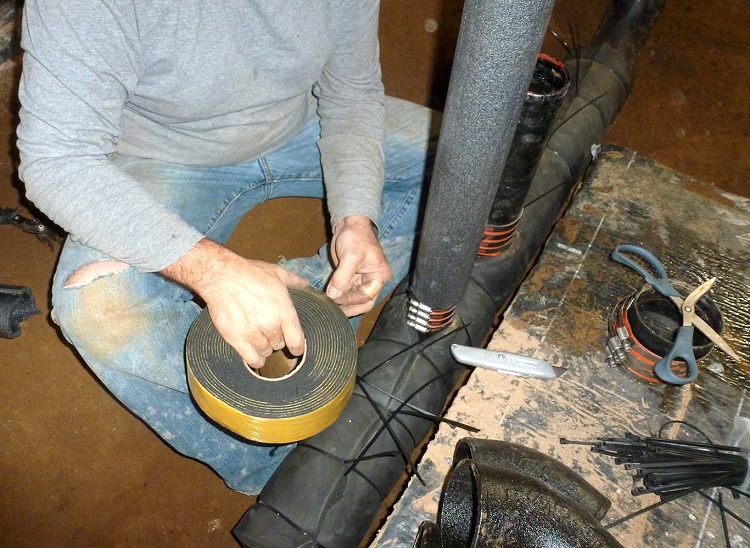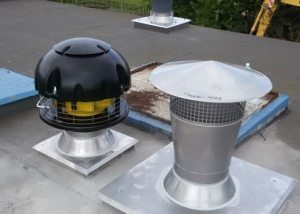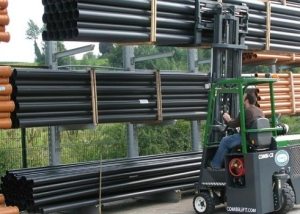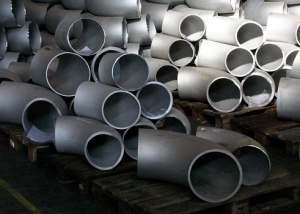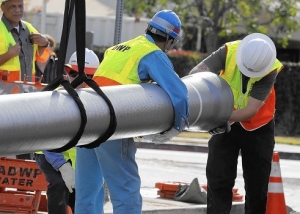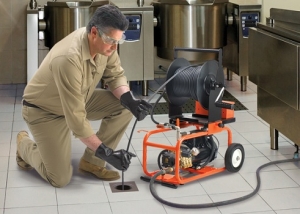Insulation for sewer pipes is a material that protects sewer pipes from the effects of low temperatures in winter. If you do not insulate the pipes, then the risk of an emergency occurs - the channels freeze and burst. Repair of the pipeline in winter conditions is quite problematic, so the use of additional protective materials is a necessity.
Content
Why and in what cases is it necessary to insulate sewer pipes?
First of all, it is worth remembering that the insulation of the sewer network is a very important point. If we neglect it, then in winter the risk of being left without a drainage system increases many times. At minus temperatures, the freezing of sewer lines occurs quickly enough, as a result of which ice growths appear in the pipes. Over time, the amount of ice in the system increases due to drains that pass through it without interruption and also freeze.
As you know, water during crystallization freezes and expands, creating pressure on the pipe walls. At a certain point, the walls do not stand up and break through, thereby putting the entire system out of order. Such a precaution, such as insulation, will be very useful in cases where the sewer structure is periodically idle.
To warm the sewer structure, a number of popular measures are used:
- Deepening. In this case, the pipe during laying is placed at a depth that passes below the level of soil freezing and the temperature on it is about 10-12 degrees, which is an almost ideal parameter for the normal functioning of the sewage system. Moreover, this indicator is unchanged.
- Warming. As a heater, various materials that have heat-insulating properties can be used.
- Heating. This method involves the use of a special electric cable that warms the system and prevents it from freezing in the winter.
However, not all professionals are aware of the freezing depth and install pipes at an insufficient depth, without any thermal insulation measures, which leads to disastrous consequences.
Note! When installing the sewer system in soils that have a high probability of freezing, it is necessary to produce sufficient pipe slope (20 mm or more per 1 m of construction) and install a heating cable on the pipe. In general, all measures to warm the network must be taken while laying pipes.
Insulation for sewer systems differs from heating, as it only protects the pipeline from the effects of low temperatures (slowing down its cooling), but does not directly heat it. Installation of insulation for sewerage occurs by wrapping pipes, applying special foam, etc.
Points to pay attention to when choosing a heater
The choice of insulation is a serious procedure. Materials differ in their characteristics and therefore it is worthwhile to carefully study their features in order to choose the necessary insulation of the sewage system for a particular case.
What characteristics should have a good thermal insulation material:
- light weight;
- good indicator of thermal insulation;
- durability;
- sufficient strength;
- resistance to aggressive environments in soils (materials that include cellulose are not suitable for underground pipe insulation);
- a sufficient indicator of waterproofing;
- fire resistance;
- environmental friendliness;
- ease of installation;
- acceptable price.
The options in which these products are manufactured may be:
- Rolls
- in the form of tubes, shells;
- sheets;
- elastic plates.
Elastic plates are mounted by wrapping on pipes and then securing them with cables or wire.
The main factors when choosing a material:
- Climatic zone. The lower the temperature in winter, the lower the coefficient of thermal conductivity of the insulating material should be.
- Depth of the pipeline. You need to navigate by the level of freezing of the soil.
The selection of the size of thermal insulation depending on the diameter of the steel pipe is presented in table No. 1.
Table 1
| Steel pipe | Thermal insulation | |||
| Nominal diameter, DN | Outer diameter mm | Inches | Thickness mm | Inner diameter mm |
| 200 | 219 | 8 | Roll - 14 m * 1 m * 13 mm | |
| 150 | 159 | 6 | 13 | 160 |
| 125 | 133 | 5 | 13 | 133 |
| 100 | 108 | 4 | 13 | 110 |
| 80 | 89 | 3 | 13 | 89 |
| 65 | 76 | 2, ½ | 13 | 76 |
| 50 | 57 – 60 | 2 | 13 | 60 |
| 40 | 48 | 1, ½ | 13 | 48 |
| 32 | 42,3 | 1, ¼ | 13 | 42 |
| 25 | 33,5 | 1 | 13 | 35 |
| 20 | 26,8 | ¾ | 13 | 28 |
| 15 | 21,3 | ½ | 13 | 22 |
Materials used for insulation of sewer pipes
As mentioned above, various materials are used to warm sewer structures. In fact, these are the same means as for thermal insulation of water and other types of pipes.
Mineral wool. This material has a fairly reasonable price and is one of the most popular when conducting thermal insulation work. However, for the insulation of sewer structures, it is not preferable, because over time the cotton wool coalesces. In addition, it has a high absorption coefficient of water vapor, which negatively affects its thermal insulation properties.
Note! If a heat insulation with foil is used when installing thermal insulation for the sewer line, then it is worth placing it with the foil side to the pipe. Be sure to fix the resulting structure with tape. To improve insulation, the pipeline can be covered with sand.
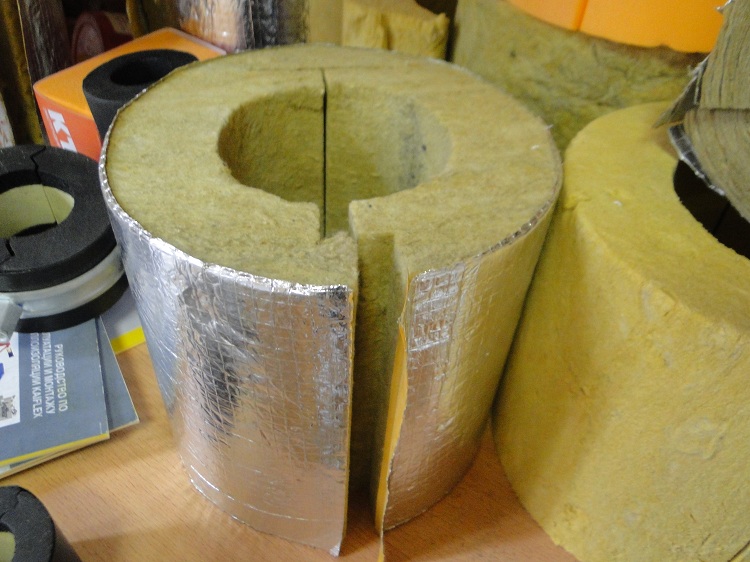
Mineral wool loses its qualities under the influence of moisture, therefore, such a heater must have a protective moisture-resistant layer
The made foam polyethylene. Installation of this material is the most simple. Foamed polyethylene has good water resistance, unlike mineral wool. The thickness of this insulating material is usually small, therefore, when conducting insulation work, it is recommended to wind the pipes in several layers. Foamed polyethylene is produced in the form of rolls and finished tubes.
Styrofoam. Polyfoam has good resistance to water vapor. For insulation of sewers, it is a good option. It is produced in the form of sheets, which, when installing thermal insulation, are placed in a special box protecting the structure. However, experts advise to buy polystyrene foam in the form of a shell - this will reduce labor costs during installation to a minimum.
Expanded clay. Warming of the sewer line with expanded clay is considered the most preferable. However, this material may only be used in dry conditions, otherwise its protective functions will not work. Expanded clay insulation is very simple - it is poured into a trench with a pipe.
Folgoizol. It is produced in two forms: SRF and FG (waterproofing). SRF consists of fiberglass and plastic film. Waterproofing foilizol is made from a bitumen-polymer layer and aluminum corrugated foil. Such material is produced in rolls. It is usually installed on the external highways. It is distinguished by liter operating life.
Glass wool. Glass wool includes molten glass and quartz sand. It has a low density. The popularity of this material is very low, as it is considered harmful and requires strict safety measures during installation.
Foamed synthetic rubber. Such a material is an elastic insulation with a closed-cell structure. Available in the form of tubes and sheets. It can be used for insulation of highways of almost any diameter.
Each of the above materials has its pros and cons. The choice of material for insulation of the sewer network should be carried out based on the specific case and the characteristics of the region.
How to insulate sewage in the soil?
Insulation for external sewage pipes must be installed during the laying of the structure. Buying insulation and its proper location in the trench is the main thing that needs to be done in order to protect communications from the cold.
The main stages for the installation of insulation:
- First of all, it is worth digging a trench, focusing on the size of the pipes and the thickness of the insulation. As a rule, a standard supply that allows in the future to equip a pipe with the necessary heat-insulating material without problems is 5 cm deep and 60 cm wide.
- At the bottom of the ditch, pour a layer of sand and carefully compact it.
- Next, a pipe is lowered into the prepared hole.
- At this stage, the insulation is installed on the pipe (depending on the material and the features of its installation). If the material has the appearance of a shell, then this will greatly facilitate the work. Insulators that are produced in rolls must be securely fixed to the pipes, for this, wire, clamps, ties are used, it is additionally recommended to wrap the resulting construction with tape.
- The final stage, at which the resulting structure is covered with sand and earth.
Note! Material that is not securely attached to the pipe may lose its performance characteristics and will not protect the pipe from frost with the advent of winter.
Active option of warming
Another way for high-quality protection of communications from low temperatures is a sewer pipe equipped with a protective electric cable. This method is considered one of the most effective, but, in turn, and quite expensive. Installation of such a cable includes installation on a pipe and connection to the mains. The operation of the cable requires the necessary energy costs, which also increases the overall cost of maintaining the structure.
The heat-insulating cable must fit snugly against the pipe wall to heat it. They also mount it at the stage of laying the sewer line. The cable itself cannot cope with the task of heating the trunk. Without a thermal insulation material, the heat generated by it will be dissipated into the environment. Therefore, it is necessary to wrap the pipe with a tight-fitting cable in the insulation. Such thermal insulation is possible for individual sections of sewer pipes: the cable can not be located along the entire length of the communication. If necessary, you can install it on a separate, problematic area, which is very convenient.
Pipe insulation on the street
In order to provide reliable protection of the sewer structure, which is located in an open area, it is worth paying attention to the choice of material. It should be ideally suited for technical specifications, be environmentally friendly and relatively inexpensive.
Mineral wool contains phenol that is harmful to the health of others, therefore it is not recommended to use it. For example, the same polystyrene foam is devoid of this drawback and will perfectly cope with the insulation of the system. It is not recommended to choose the cheapest materials - they can quickly deteriorate and cease to fulfill their function.
What tools will be needed for installation work on the insulation of an external sewer pipe:
- shovel;
- knife;
- sand;
- Scotch;
- waterproofing (if necessary for certain types of insulation).
Installation of insulation is quite simple. This is especially true for heat-insulating materials, which are produced in the form of shells. Consider the sequence of installation of insulation:
- Parts of the shell are placed on the pipe.
- Fix the shell with any fixing material or tape.
Note! Features of thermal insulation materials allow you to ignore bumps in the pipes without violating the hermetic indicators.
Insulation of the ventilation sewer pipe
A ventilation sewer pipe (fan) can have the following location options:
- have a conclusion to the roof and pass from the riser of the sewer system;
- have access to the surface of the earth and ventilate any treatment facility.
Carrying out work, such a design emits moist fumes that settle on its walls and freeze at low temperatures, forming an ice crust. Due to the ice layer, the lumen of the pipe decreases and eventually the system becomes clogged and its failure. This will lead to the fact that the residents of the house (ventilated by this system) will feel an unpleasant odor coming from plumbing fixtures. In the event of an ice clogging of the sewage fan element, the following steps must be performed:
- pour a bucket of boiling water on top of the ice clot;
- wrap the structure in a suitable insulating material.
Important! When laying the cable for heating the fan pipe, measures should be taken to isolate it. For this, a plastic pipe or corrugation is suitable.
The choice of insulation is a very responsible event, therefore, before buying any of its varieties, it is necessary to study all the nuances. If necessary, you can always consult with specialists. They will help you choose a quality product that can cope well with the protection of the structure from low temperature. Ensure the smooth operation of the entire drainage system in your home can only be insulated sewer pipes.
